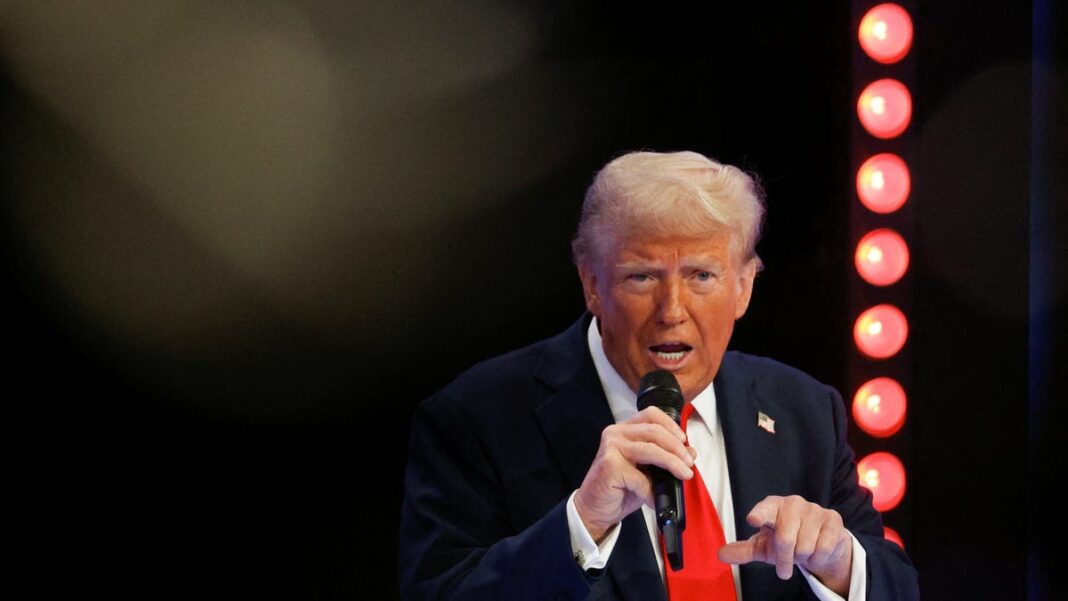Can military forces be utilized to address an ‘internal enemy,’ as Trump proposed? Here’s what you need to know
During an appearance on Fox News Sunday, former President Donald Trump proposed the use of military forces on U.S. territory to curtail unrest on November 5.
When questioned about the potential for violence incited by foreign actors on Election Day, he stated:
“I believe the more significant issue is the internal enemy,” referring to the “radical left-lunatics” as a possible threat on Election Day. “It should be manageable through, if necessary, the National Guard or, if absolutely necessary, the military.”
This suggestion made some Republicans uneasy, and Vice President Kamala Harris seized on his comment, airing the footage of Trump’s interview during a rally in Pennsylvania the following night.
Here’s what you should understand regarding the president’s authority to deploy the National Guard and military forces.
Biden remains commander of the military until Inauguration Day
Control of the military is solely in the hands of the president of the United States. This means that until either Trump or Harris takes office on January 20, 2025, President Joe Biden will continue to serve as Commander in Chief.
The National Guard has both state and federal responsibilities but is primarily under the authority of state governors. The president has control over the National Guard in D.C.
Presidents possess the ability to deploy military forces domestically under the Insurrection Act
The Insurrection Act encompasses laws that date back to 1792. According to the Brookings Institution, it serves as the main legal framework outlining when a president can send federal troops in response to civil disorder. It specifies three scenarios in which military force can be authorized:
- A state solicits federal support
- A rebellion renders the enforcement of federal laws impossible
- A form of violence or conspiracy is infringing upon the constitutional rights of others
This legislation aims to create an exception to the fundamental U.S. principle that military involvement in civilian matters should be avoided.
Trump had previously suggested using the military to respond to the protests in summer 2020
The Insurrection Act has been invoked numerous times throughout American history, as noted by the Brennan Center for Justice. Early presidents like George Washington and John Adams applied it to suppress uprisings against federal authority. Abraham Lincoln invoked it at the onset of the Civil War, and various presidents turned to it during the civil rights movement to enforce desegregation mandates.
The most recent application of the Insurrection Act occurred during the Los Angeles race riots under President George H.W. Bush, but it was done at the request of the California governor, according to data from the Brennan Center.
During the protests and riots of summer 2020, Trump expressed a desire to activate the Insurrection Act, but faced resistance from members of his own administration. Nevertheless, he has persisted in discussing such concepts throughout this campaign season.

